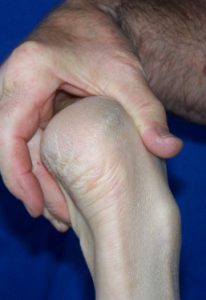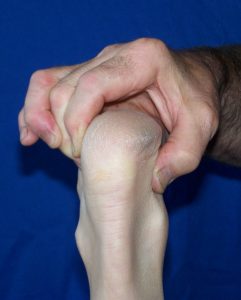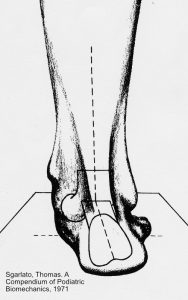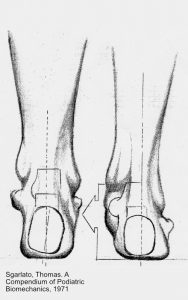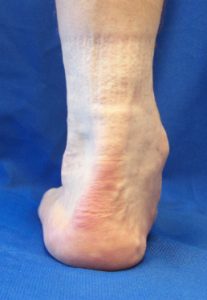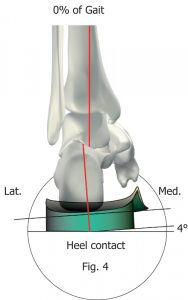The range of motion and direction of motion of the STJ are important considerations.
The end point of pronation of the Subtalar Joint is important. The overwhelming majority of calcanei do not evert past the perpendicular to the transverse plane. (Rearfoot Varus is a very common commodity). While this is seemingly an outrageous remark, it can readily be demonstrated by placing a patient prone on the examining table, flexing the knee to 90 degrees and maintain the lower leg perpendicular to the tabletop in both the sagittal and frontal planes. With the ankle joint dorsiflexed to 90 degrees, maximum eversion of the calcaneus will place the heel bone approximately perpendicular to the tabletop. This can be visually demonstrated on almost any patient.
Consider the Relaxed Calcaneal Stance Position and determine if the Calcaneus is truly everted. In reality, the appearance of the everted rearfoot is an illusion due to fat pad displacement as the rearfoot and midfoot shifts medially as illustrated below. Disregarding the lateral fat pad and carful palpation of the medial and lateral borders of the central portions of the posterior surface of the Calcaneus (avoid the plantar lateral tubercle of the heel) will demonstrate that the calcaneus is approximately perpendicular to the transverse plane (+/- 2 to 3 degrees). The medial displacement of the midfoot and rearfoot is actually due to the unlocking (abnormal pronation) of the Midtarsal Joint. The forefoot cannot abduct due to the weight bearing friction and therefore the rearfoot and midfoot adduct.
The bottom line is that the Calcaneus always attempts to reach vertical and generally this is accomplished. If the Calcaneus is maximally pronated at the moment of heel contact then there is no shock absorption within the Subtalar Joint but inverting the Calcaneus by four degrees at the moment of heel contact will permit the Subtalar Joint to pronate and absorb shock. This seemingly small range of Subtalar Joint motion has a profound effect upon the function of the pelvis.
Posting has a significant effect upon the ability of the hip to flex and extend as well as prevent shock at heel contact.
Written by Chris Smith, DPM, Former Vice President and Medical Director of Northwest Podiatric Laboratory and Professor Emeritus of Biomechanics at the California School of Podiatric Medicine (CSPM) at Samuel Merritt University.
